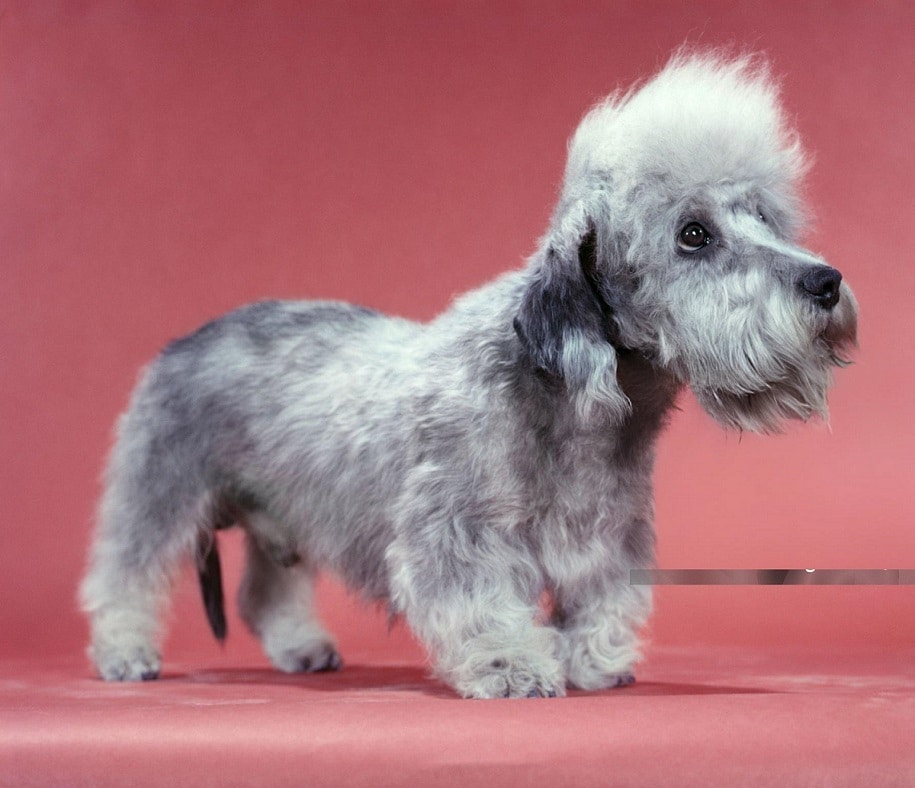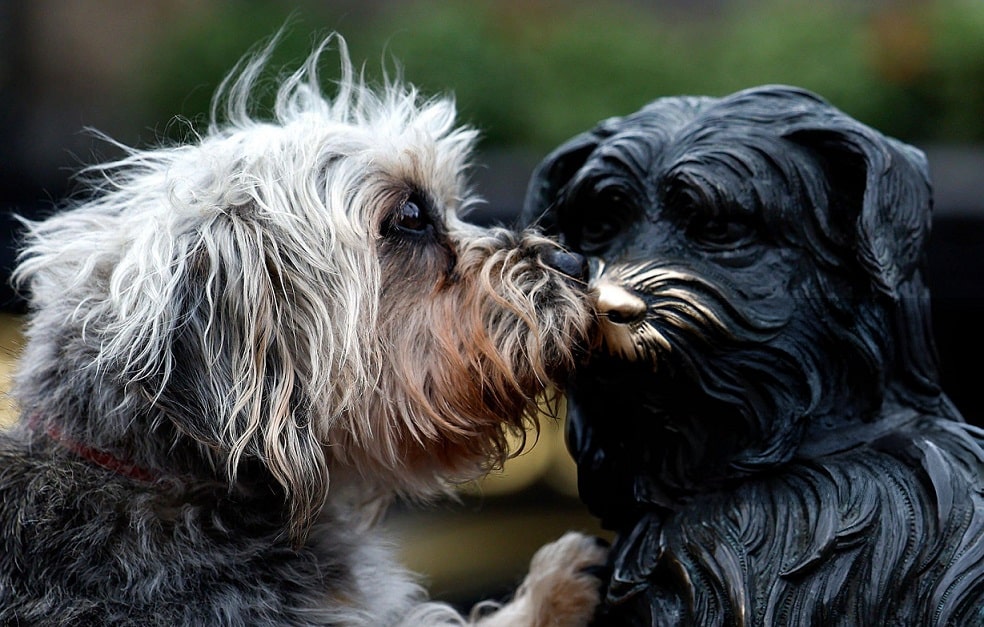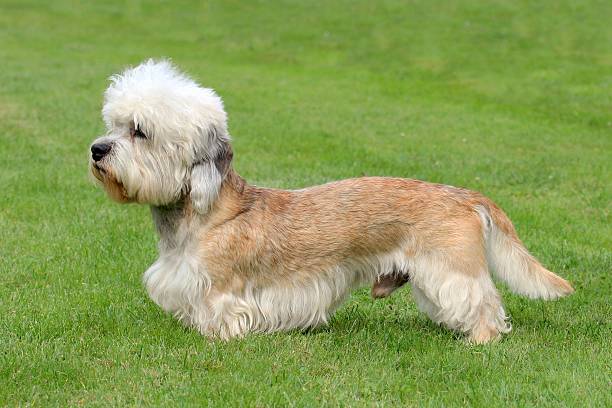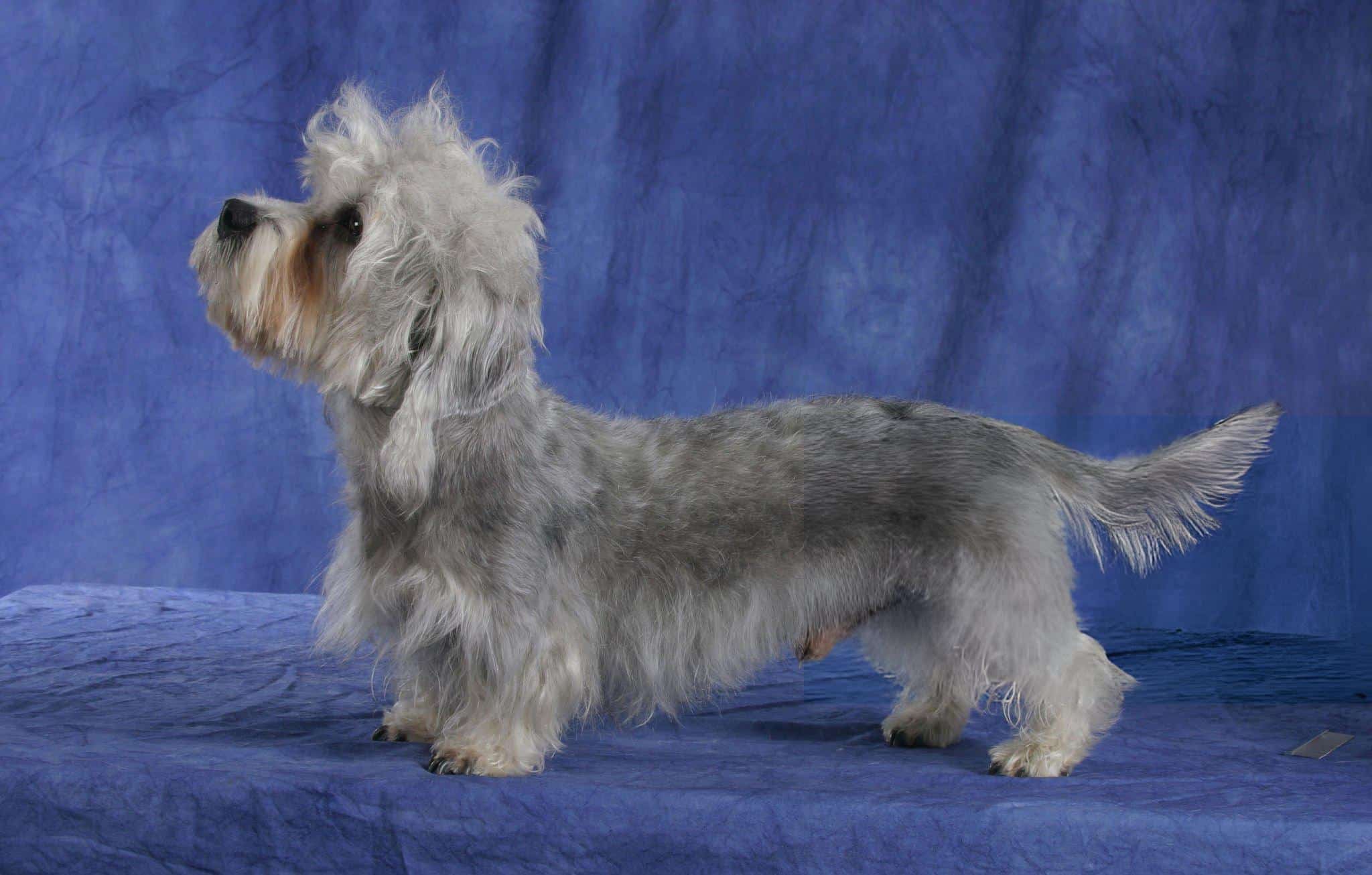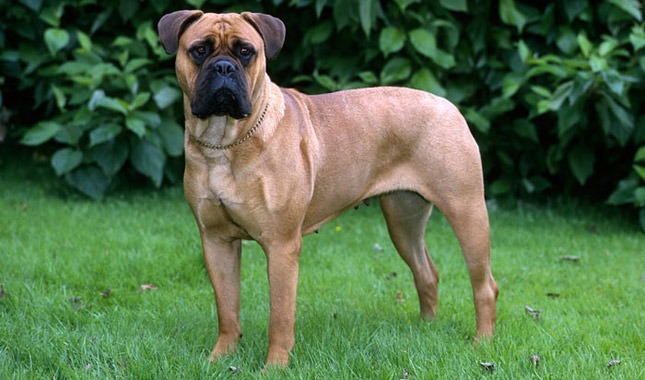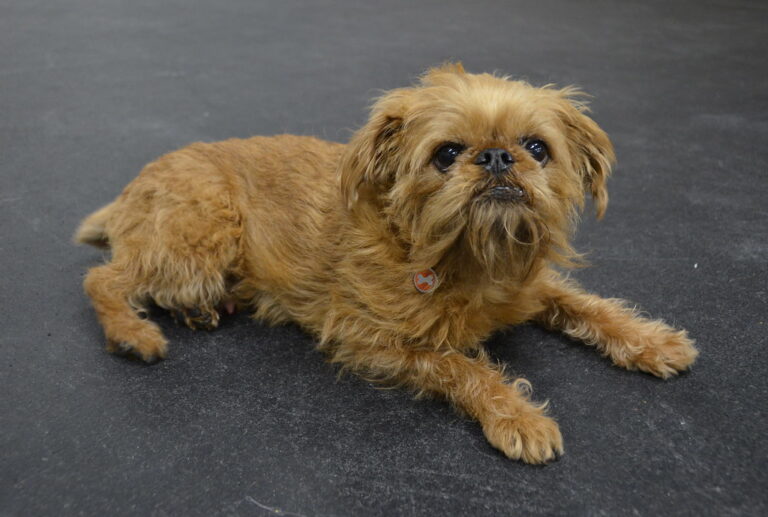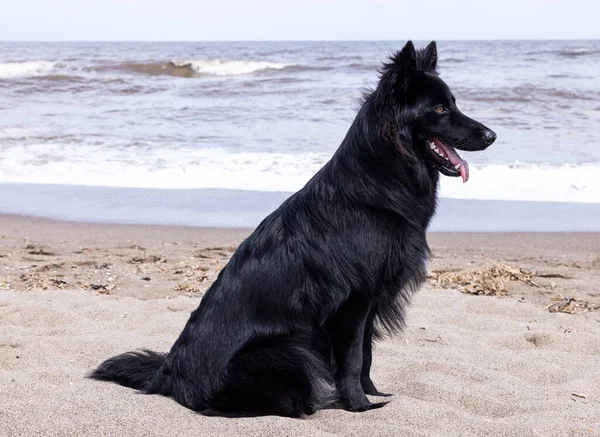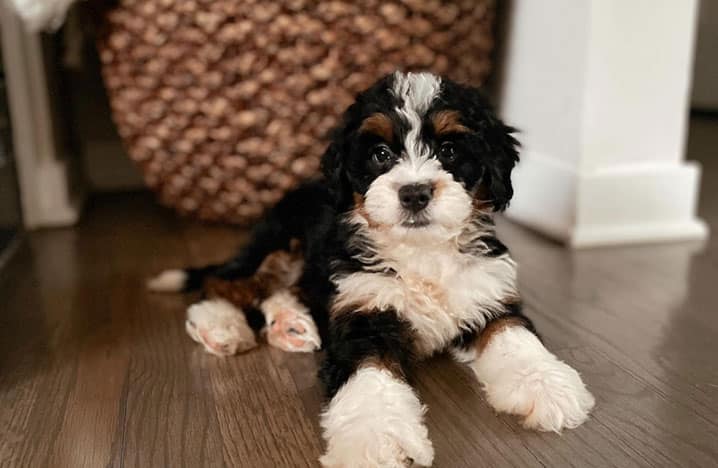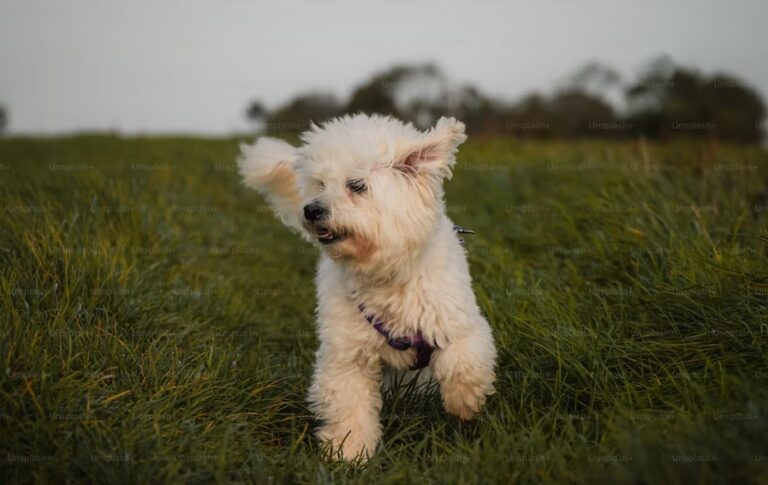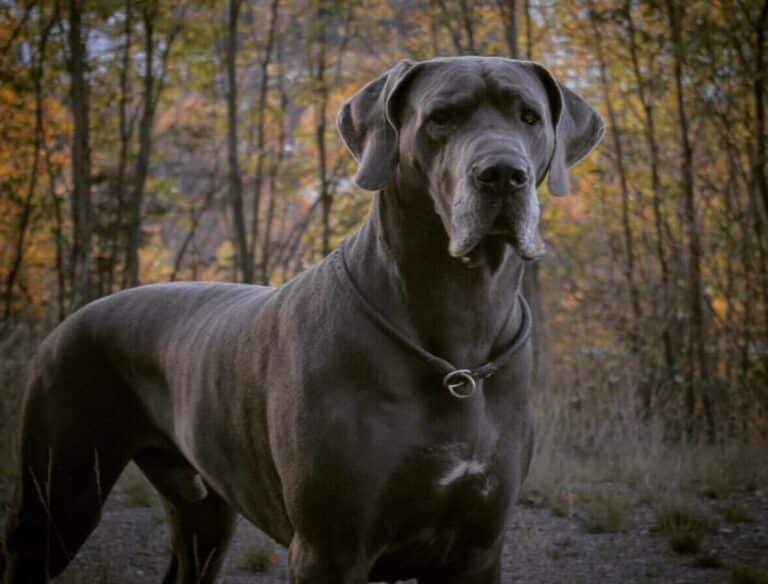The Dandie Dinmont Terrier is a small dog breed with a unique appearance and a lively personality. Originating from Scotland, these dogs are known for their distinctive long body, short legs, and fluffy topknot. Despite their small size, Dandie Dinmont Terriers are brave and determined, making them excellent hunters and loyal companions. In this Dog breed guide, we will explore the history, characteristics, and care needs of the Dandie Dinmont Terrier breed.
History of Dandie Dinmont Terrier
Origins
The Dandie Dinmont Terrier is a breed of small terriers that originated in the border region between England and Scotland. Named after a character in Sir Walter Scott’s novel “Guy Mannering,” these terriers have a rich and fascinating history.
Popularity in the 19th century
During the 19th century, Dandie Dinmont Terriers gained significant popularity, especially among the aristocracy and landed gentry. Their unique appearance, with their long bodies, short legs, and distinctive topknot, made them stand out from other terrier breeds. They were highly sought after as companion dogs and were often seen accompanying their owners during hunting expeditions.
Decline and preservation efforts
Unfortunately, as the 19th century came to an end, the popularity of Dandie Dinmont Terriers started to decline. The breed faced challenges due to changing hunting practices and the rise of other terrier breeds. By the early 20th century, the Dandie Dinmont Terrier population had significantly decreased, and it became a rare breed.
However, dedicated breed enthusiasts and preservation efforts played a crucial role in keeping the Dandie Dinmont Terrier from extinction. The Dandie Dinmont Terrier Club, founded in 1875, worked tirelessly to promote and preserve the breed. Through careful breeding programs and education about the breed’s unique characteristics and history, the Dandie Dinmont Terrier was saved from being lost forever.
Today, Dandie Dinmont Terriers continue to be cherished for their distinctive appearance, charming personality, and loyalty. While still considered a relatively rare breed, their numbers have stabilized, thanks to the dedication and passion of breeders and enthusiasts who strive to maintain the breed’s unique and distinguished heritage.
Physical Characteristics
Size and weight
Dandie Dinmont Terriers are small to medium-sized dogs, typically weighing between 18 and 24 pounds (8 to 11 kilograms). They have a sturdy and well-balanced build, with a slightly elongated body and short legs. Despite their compact size, they possess a muscular frame that allows them to excel in various activities.
Coat and color
One of the most distinctive traits of Dandie Dinmont Terriers is their unique coat. They have a double coat, consisting of a soft and dense undercoat and a wiry, weather-resistant outer coat. The combination of these two layers provides excellent protection against the elements.
Their coat colors can vary and are classified into two main categories: pepper and mustard. Pepper refers to a mix of dark and light hairs, creating a salt-and-pepper appearance. Mustard, on the other hand, is a lighter shade ranging from pale fawn to a rich golden color. Both coat colors are equally beautiful and add to the Dandie Dinmont Terriers’ charm.
Distinctive features
Dandie Dinmont Terriers possess several distinctive features that set them apart from other terrier breeds. Their large, expressive eyes are set wide apart and contribute to their endearing and attentive expression. Their ears are pendant-shaped, hanging close to their head, adding to their unique appearance.
Another notable feature is their large, domed head, which is proportionate to their body size. Their snout is well-developed and ends with a black nose, giving them an air of intelligence and curiosity. Dandie Dinmont Terriers also have a strong jaw with a scissor bite, which is essential for their hunting instincts.
Overall, the physical characteristics of Dandie Dinmont Terriers make them truly unique and distinguished among terrier breeds. Their size, coat, and distinctive features all contribute to their undeniable charm and appeal.
Temperament and Personality
Dandie Dinmont Terriers are known for their unique temperament and personality. These terriers are highly affectionate and loyal, making them wonderful companions for individuals and families alike. They have a calm and gentle nature, which makes them suitable for households with children and elderly people.
Intelligence and Trainability
Although Dandie Dinmont Terriers are intelligent dogs, they can sometimes be independent and stubborn. However, with consistent and positive reinforcement training methods, they can be trained effectively. It is important to provide them with mental stimulation and engage them in various activities to keep their minds sharp.
Socialization and Interaction with Other Pets
Dandie Dinmont Terriers can be socialized to get along well with other pets if introduced properly from an early age. They have a strong prey drive, so it is important to supervise their interactions with smaller animals. With proper socialization and training, they can coexist peacefully with other pets in the household.
Energy Levels and Exercise Needs
Despite their small size, Dandie Dinmont Terriers have moderate energy levels and require regular exercise to stay healthy and happy. They enjoy daily walks, playtime, and interactive games that stimulate both their mind and body. Providing them with outlets for their energy can prevent behavioral issues and ensure their overall well-being.
Health and Care
Common health issues
Dandie Dinmont Terriers are generally a healthy breed, but like any other dog, they can be prone to certain health issues. It is important for owners to be aware of these common health problems and take necessary steps to ensure the well-being of their furry companions.
One of the common health issues that Dandie Dinmont Terriers may experience is back problems. Due to their long spinal column and short legs, they can be susceptible to intervertebral disc disease. This condition occurs when the discs between the vertebrae in the spine become compressed or herniated, leading to pain, mobility issues, and in severe cases, paralysis. It is crucial to provide these terriers with proper support and avoid activities that put excessive strain on their backs.
Another health concern for Dandie Dinmont Terriers is hypothyroidism. This condition occurs when the thyroid gland doesn’t produce enough hormones, resulting in a slower metabolism. Symptoms may include weight gain, lethargy, hair loss, and skin problems. Regular veterinary check-ups and appropriate medication can help manage this condition effectively.
Additionally, Dandie Dinmont Terriers are prone to developing glaucoma, a condition characterized by increased pressure within the eye. This can lead to vision loss if left untreated. Regular eye examinations and early detection are essential for maintaining the ocular health of these terriers.
Grooming requirements
Dandie Dinmont Terriers have a unique and distinctive coat that requires regular grooming to keep it healthy and looking its best. Their double coat consists of a soft, dense undercoat and a wiry topcoat that provides protection from the elements.
To maintain their coat, Dandie Dinmont Terriers should be brushed at least once or twice a week. This helps prevent matting and removes loose hair. Using a slicker brush or a comb with wide teeth can be effective in untangling any knots or tangles. Trimming the hair around the ears, paws, and bottom is also necessary to keep these areas clean and hygienic.
In addition to regular brushing, Dandie Dinmont Terriers should be professionally hand-stripped a few times a year. Hand-stripping involves gently plucking out dead hairs from the coat, which helps maintain its texture and color. It is recommended to seek the assistance of a professional groomer experienced in hand-stripping techniques to ensure the best results.
Nutrition and exercise
Proper nutrition and exercise are vital for maintaining the overall health and well-being of Dandie Dinmont Terriers. Providing a balanced diet that meets their specific nutritional needs is essential for optimal growth, development, and energy levels.
High-quality dog food formulated for small breeds or terriers is recommended for Dandie Dinmont Terriers. The food should contain a balanced combination of protein, carbohydrates, and fats. It is important to follow the feeding guidelines provided by the manufacturer and adjust the portions based on the dog’s age, weight, and activity level.
Regular exercise is necessary to keep Dandie Dinmont Terriers physically and mentally stimulated. Daily walks, playtime, and interactive toys are great ways to ensure they receive the necessary exercise they need. However, it is important to avoid overexertion, especially in hot weather, as these terriers may be prone to heat exhaustion.
Monitoring their weight is crucial to prevent obesity, which can lead to various health problems. Consulting with a veterinarian to determine the appropriate amount of food and exercise for your Dandie Dinmont Terrier is highly recommended.
Remember, providing proper health care, grooming, and nutrition are essential for ensuring the well-being and longevity of your beloved Dandie Dinmont Terrier.
Choosing a Dandie Dinmont Terrier
Dandie Dinmont Terriers are a unique and distinguished breed that make excellent companions. If you are considering bringing a Dandie Dinmont Terrier into your home, there are a few important factors to consider. This article will provide you with helpful information on how to choose the perfect Dandie Dinmont Terrier for your family.
Finding a reputable breeder
When looking for a Dandie Dinmont Terrier, it is crucial to find a reputable breeder. A reputable breeder will prioritize the health and well-being of their dogs and will have a thorough understanding of the breed. Here are a few tips to help you find a reputable breeder:
- Research: Start by doing some research online or asking for recommendations from trusted sources. Look for breeders who have a good reputation and positive reviews from previous customers.
- Visit the breeder: Once you have identified a potential breeder, schedule a visit to their facility. This will allow you to see firsthand how the breeder cares for their dogs and the conditions in which they are raised.
- Ask questions: During your visit, don’t hesitate to ask the breeder questions about their breeding practices, health testing, and socialization efforts. A reputable breeder will be transparent and open to answering all your queries.
Assessing the puppy’s health
Ensuring the health of your future Dandie Dinmont Terrier is essential. Here are a few key factors to consider when assessing the health of a Dandie Dinmont Terrier puppy:
- Health certifications: Reputable breeders will provide you with health certifications for both the puppy’s parents. These certifications indicate that the parents have been tested for common genetic health issues and are free from any hereditary diseases.
- Physical examination: Take a close look at the puppy’s appearance. They should have clear eyes, a shiny coat, and be energetic and alert. Check for any signs of illness or abnormalities.
- Veterinary check-up: It is advisable to have a veterinarian examine the puppy before finalizing the adoption. They can perform a thorough health evaluation and give you peace of mind about the puppy’s overall well-being.
Costs and responsibilities
While Dandie Dinmont Terriers make wonderful companions, it is important to consider the costs and responsibilities associated with owning one. Here are a few factors to keep in mind:
- Initial costs: Owning a Dandie Dinmont Terrier involves initial expenses such as purchasing the puppy, vaccinations, microchipping, and supplies like food bowls, crate, and toys.
- Ongoing expenses: Dandie Dinmont Terriers require regular veterinary care, grooming, quality food, and preventive medications. It is important to budget for these recurring expenses.
- Time and commitment: Dandie Dinmont Terriers thrive on human companionship and require regular exercise, mental stimulation, and training. Be prepared to invest time and effort into their care and well-being.
By considering these factors, you can make an informed decision about whether a Dandie Dinmont Terrier is the right fit for your lifestyle and provide them with a loving and responsible home.

